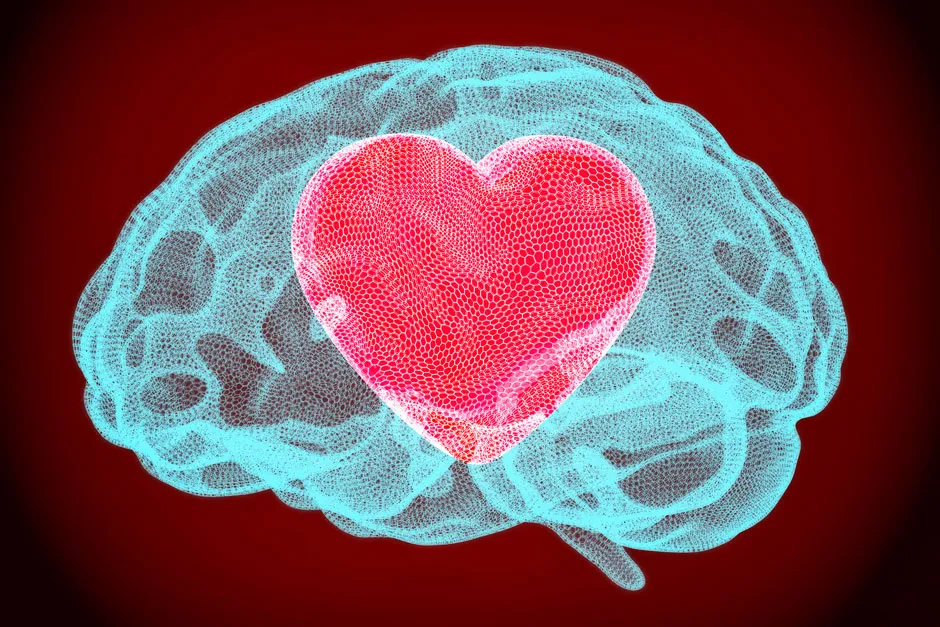Love. From flurries of excitement, joy and infatuation, to crippling self-consciousness, deep attachment and even all-consuming fear, it’s a potent cocktail of emotions. So powerful, in fact, it has a profound impact on your body.
For instance, people who sleep in the same bed have been shown to synchronise their heart rhythms, while otherresearch has observed that people’s breathing align when they are involved in a romantic relationship.
Romance can also have major consequences on your brain too – think about when your mind has wandered away from work or conversations to ponder about a loved one.
Distractions of love are something that Dr Sandra Langeslag, a behavioural neuroscientist at the University of Missouri, is currently investigating.
“In one of my studies, we asked people how often they think of their beloved when they are awake. And the average was 65 per cent of the time, with the highest being around 90 per cent,” said Langeslag.
Unfortunately, she doubts that this intense focus on a loved one is unlikely to improve your ability to focus in general. “Biologically, loving bonds are a cognitive strategy for sharing risk. Sexual bonds are one sort and friendship bonds are another. They differ certainly but both involve this sharing of risk with each other,” says Professor Steven Phelps, a behavioural neurobiologist studying how genes impact our brain and behaviour.
Interestingly, such bonds may even make hardship more tolerable. In 2019, researchers found that of 102 people, those with a romantic partner present appeared to experience less stress or pain when submerging their hand in ice-cold water than participants without a partner present in the study. Even those without a partner physically present, but who were drawing upon mental representations of their partners, showed fewer signs of stress.
Read more about the science of love:
A picture of love: imaging romance in the brain
Has a fast-moving romantic relationship left you thinking “What is going on in my head?” Here’s how scientists are seeking to answer this very question.
Many researchers use one of two brain-scanning techniques.
- Functional magnetic resonance (fMRI).This creates an image of the brain, revealing regions which are most active in different circumstances.
- Event-related potentials (ERPs).This measure the changes in brain activity in response to different stimuli. These patterns can be linked to different cognitive processes, but we cannot map them onto the brain in the same way. However, ERPs are very time-specific, giving signals on a millisecond timescale.
Langeslag explains: “I have used ERPs mostly to study attention. So, I usually have people that are in love and I show a picture of their beloved and their friend and maybe a stranger. There are two brainwaves with ERP components that indicate attention, and they're usually larger when people see their loved ones than when they see their friend.”
These two components Langeslag describes are linked to immediate attention and sustained attention. She has used both images and words to investigate this, finding people in love have the most immediate and sustained attention for pictures of their beloved and information related to them.
“This is the example of ‘if you know your beloved drives a red Ford, you'll see those everywhere because they remind you of them’. We’re getting a picture of the brain to help us understand these experiences,” says Langeslag.

She extended her research to measure the influence of love on our attention on tasks, finding that when attention is diverted to somebody’s beloved, it slows their task performance.
In 2017, scientists used similar techniques to observe electrical signals in the brain as couples and two strangers interacted with each other. By scanning people’s brains, they were able to see synchronised patterns between partners associated with social connectedness. Researchers say this “neural synchrony” was higher in romantic couples compared to those paired with strangers.
“I think having chemistry with someone actually reflects a different phenomenon in our brain, whereby this degree of synchrony matches with how well connected we feel with another person. And this synchrony is higher for those in romantic relationships than if they don’t know each other,” says Professor Zoe Donaldson, a behavioural neuroscientist.
What hormones make love possible?
Most of us have heard of oxytocin as the “cuddle hormone” or “love hormone” as it’s associated with social connection and released during sex. Yet there isn’t just one hormone, and you cannot simply spritz yourself in oxytocin and find love.
Instead, there is likely a cocktail of hormones interacting in a specific way in humans that lead us to love.
“There are three areas in the brain that act as a magic trilogy, interacting with three key hormones: dopamine, oxytocin and vasopressin,” says Phelps.
All organisms have these hormones, and they have different functions, but it is the parts of our brain that they interact with that make them important.
To simplify, these three brain regions are:
- Ventral tegmental area (VTA), which releases dopamine.
- Nucleus accumbens (NA), containing many oxytocin receptors.
- Ventral pallidum (VP), containing many vasopressin receptors.
These are all interlinked reward systems, which fire up in response to drugs and the hormones associated with love.
It’s the VTA that starts the show, using neurotransmitters to send dopamine and other hormones to the other regions of the brain associated with different human functions.
For instance, the nucleus accumbens links the pleasurable feelings of romantic love to our sensory systems. This is one way that science helps us understand why you might connect a smell, colour or song to a loving feeling you have for a partner.
The ventral pallidum is mainly involved in processing signals of motivation and reward, and cementing certain actions associated with these rewarding feelings in our mind.
Dopamine both helps fire up relationships and maintains them, and from animal studies, it can be seen that different receptors respond to falling in love, staying in love and breaking up.
“There’s this beautifully timed synergistic relationship between hormones that allows these stages to progress,” says Professor Sue Carter, a biologist in the field of social bonding and love.
Oxytocin receptors in the brain region which mediates reward and motivation (the nucleus accumbens) are key to explaining many individual differences in behaviour. In fact, scientists have found that people who have a greater amount of oxytocin receptors in this region is associated with a higher likelihood of forming lifelong pair bonds.
For instance, in 2003 researchers tested just how important oxytocin and dopamine receptors are by blocking them in prairie voles, animals known to mate for life. The researchers reported that when receptor sites were blocked, they no longer formed their usual 'pair bonds' similar to human relationships.
What happens when we fall out of love?
According to Dr Langeslag, it’s likely we have been in love more often than we think. Though we cannot directly measure something so subtle and personal as falling out of love, people may apply a memory bias or an emotional protection strategy when looking back at a relationship.
“Relationships can diminish or they can go through very intense break-ups. Those are biologically different, with different consequences for people’s emotions,” says Carter.
Read more about love:
Scientists could conduct a very long-term study and measure the hormone levels before and after a relationship. However, hormones like oxytocin and vasopressin measurements are usually detected in the blood or saliva, some distance from the brain.
Carter says these may not be as reflective of the brain’s state by the time researchers collect samples. She adds that break-ups are incredibly difficult to study for ethical reasons.
“We can't go around breaking up couples and we rarely know why couples break up. Let's say a relationship is between A and B. Did they break up because they were not really in love? Or is there some kind of difference in A’s oxytocin system that was incompatible with B’s oxytocin system,” explains Carter.
However, she adds: “The simple fact that we now know there's a biology of love – and we have some names for the molecules and the brain areas that are involved – frees us from some of the mysteries. Especially the negative mysteries associated with who we love."
She explains that biology, genetics and environment are constantly altering how we perceive and feel love and we only really have the building blocks for understanding it right now.
But, by placing these relationships in a scientific context, it could help people move forward and away from a negative relationship – and maybe find love again.
